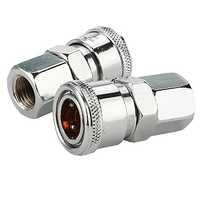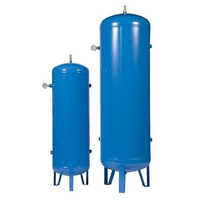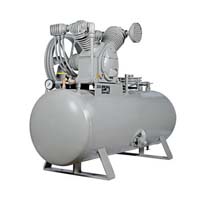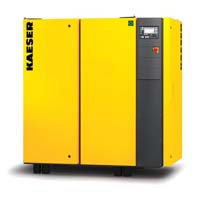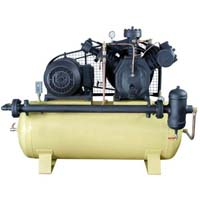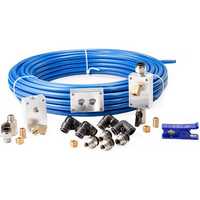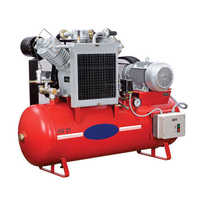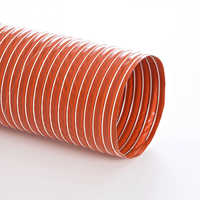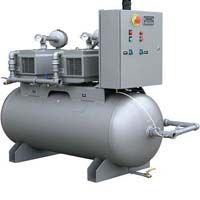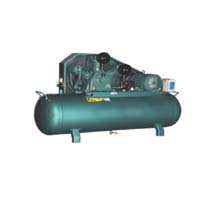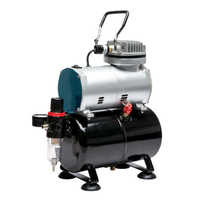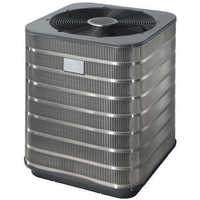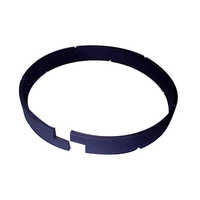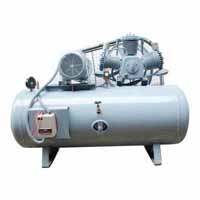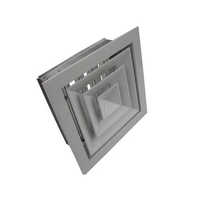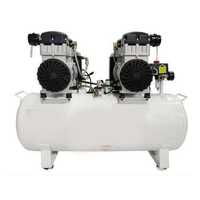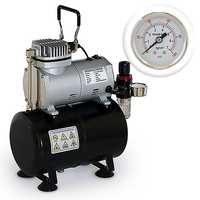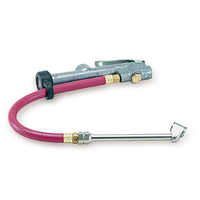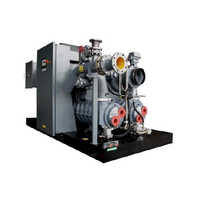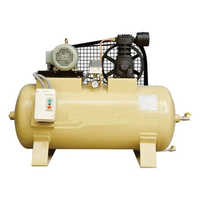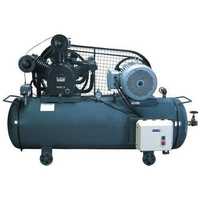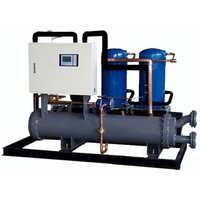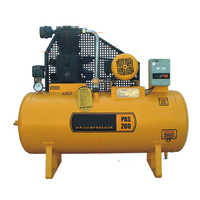Air Compressors & Air Separation Plants
(4037 products)
Related Categories
Abrasives
Acoustic Products
Acrylic Sheets
Air Blowers
Air Compressors & Air Separation Plants
Air Cooler
Air Dryers
Air Receiver
Air Valves
Aluminum Castings
Anchors
Anti Vibration Mounts
Ball & Roller Bearings
Ball Valves
Ballast Making Machines
Bearing Parts & Components
Bearings
Bellows & Expansion Joints
Belt Pulleys
Boilers, Components & Spares
Bolts
Bright Bars
Bristles
Burners/Industrial Burners & Incinerators
Bushings & Bushing Parts
Butterfly Valves
CNC Machined Components
Cable Pulleys
Capital Goods
Carbon & Graphite Products
Castor Wheels
Centrifugal Pumps
Centrifuges
Ceramics
Chains & Chain Link Fence Fittings
Cleaning Equipment
Clips, Clamps
Coils
Combustion Equipment
Compression Springs
Compressors & Allied Equipment
Control Valves
Conveyor & Conveyor/Industrial Belts
Cooling Tower & Chilling Plants
Coupling
Cranes
Cryogenic Equipment
Cutting Tools, Broaches & Cutters
Departmental Shelving
Diaphragm Valves
Die Castings
Dies & Moulds
Dies,Jigs,Fixtures
Diesel Engine & Electric Locomotive Spares
Draught Fan
EOT Cranes
Electric Hoists
Electric Motors & Engines
Electroplating Chemicals & Equipment
Energy Management System
Engine Valves
Engineering Goods & Equipment
Engineering Plastics
Engraving Equipment
Extruded Profiles
Fasteners
Fiberglass Products
Filter Cartridges & Media
Filter Cloth, Filter Industrial
Filters-Air, Gas, Liquid
Filtration & Sedimentation Units
Flat Metal Processing Equipment
Float Valves
Fork Lift Truck Parts
Fork Lift Trucks
Forklifts
Foundry Raw Material & Equipment
Furnace Manufacturers
Galvanized Fasteners
Gantry Cranes
Gaskets
Gate Valves
Gauges & Gauge Glasses
Gear Boxes, Reduction Gears & Gear Cutting
Girder Cranes
Glass & Glass Products
Glass Cutting Tools/Glass Cutters
Globe Valves
Goliath Cranes
Grating
Hand & Allied Tools
Hand Pump
Hardware & Tools
Heat Exchangers
Heating Elements
Hex Bolts
Hex Nuts
Hooks & Mounts
Hoses
Hot Air Oven
Humidification & Ventilation Equipment
Hydraulic Hoses & Flexible Metal
Hydraulic Press
Hydraulic Press Brakes
Hydraulic Products & Equipment
Hydraulic Valves
Induction Heating Equipment
Industrial Automation
Industrial Brakes
Industrial Brushes
Industrial Clothing
Industrial Clutches
Industrial Cylinders
Industrial Dryers
Industrial Evaporators
Industrial Knives
Industrial Nets
Industrial Ovens
Industrial Rollers
Industrial Supplies Stocks
Industrial Supplies-General
Industrial Tape
Industrial Tools
Industrial Valves
Industrial Vibrator
Inspection Equipment
Instrumentation
Internal Combustion Engine
Jib Cranes
Laboratory Furniture
Laboratory Glassware & Equipment
Laundry Equipment
Lined Valves
Machine Tools Accessories
Marking Systems
Material Handling Equipment
Measuring Tools & Equipment
Mechanical Seals
Metallised Capacitor Films
Mining Equipment
Mining, Exploration & Drilling Machinery
Model Making Materials
Motor Couplings
Moulded Components
Moulds
Needle Valves
Needles
Nuts
Oil Seals
Outdoor Cooling Systems
Overhead Cranes
PVC Hoses
PVC Products
Paint Brushes
Painting Equipments & Maintenance
Perforated Sheets
Plastic Processing Machinery Parts
Plastic Valves
Plastic Welding Equipment
Plate Valves
Plug Valves
Pneumatic Products & Tools
Pneumatic Valves
Polish & Polishing Material/Machinery
Power Press
Precision Brass Components
Pressed Components
Pressure Gauges
Pressure Vessels
Pulleys
Pulverizers
Pump Spares Parts
Pumps & Pumping Equipment
Radiators
Refrigeration & Equipment
Rope Pulleys
Rope,Twines & Webbings
Ropes
Rotary Valves
Rubber & Rubber Products
Rubber Gaskets
Rubber Roller
Rubber Seals
Rubber Transmission Belts
Screws
Seals
Sensors & Transducers
Shaft Couplings
Shafts & Shaft Collars
Sheet Metal Components & Parts
Solenoid Valves
Springs
Stainless Steel Bolts
Stainless Steel Fasteners
Stainless Steel Nuts
Stainless Steel Valves
Storage Systems
Storage Tanks
Submersible Pumps
Surface Finishing Equipment
Synthetic Industrial Diamonds
Thermostatic Bimetals & Thermostats
Trolleys & Carts
Tungsten Carbide
Ultrasonic Equipment
V-Belts
Vacuum Equipment & System
Valves
Valves Fittings
Vibrating Screen
Washers
Water Coolers
Weighbridge
Welding & Soldering Supplies
Welding Electrodes
Welding Equipment
Winches
Wire Drawing Dies
Wire Rope Hoists
Wire Ropes
Explore More Categories
Tank Mounted Rotary Screw Air Compressor
Price: 205000-356850 INR (Approx.)/Piece
MOQ - 2 Piece/Pieces
5 Years
Business Type: Manufacturer | Exporter
PRS COMPRESSORS PVT. LTD.
Indian Inquiries Only
Vertical Water Screw Air Compressor Capacity: 270 Liter/Day
Price: 300000 INR (Approx.)/Set
MOQ - 1 Set/Sets
Color - other
Product Type - Vertical water-cooled air compressor
Material - Other, Stainless steel
4 Years
Business Type: Manufacturer | Supplier
LABH PROJECTS PVT. LTD.
Verified Exporter
( Accepts only Foreign Inquiry)
Indian Inquiries Only
Grey Air Compressor
MOQ - 1 Unit/Units
Usage - Spray painting. Pneumatic tools. Motor Cycle Shop. Automotive garages work shop. Tyre shop PV/CV. Wash Stations.
Product Type - AIR COMPRESSOR
Color - Grey
2 Years
Business Type: Manufacturer | Distributor
ATS ELGI LIMITED
Blue Refrigerated Air Drying Unit
Price: 20000.00 - 200000.00 INR (Approx.)/Piece
MOQ - 1 Piece/Pieces
Product Type - Refrigerator
Usage - For reduce the temperature of compressed air through contact with a cold medium
Material - Stainless Steel
15 Years
Business Type: Manufacturer | Exporter
DYNAMIC ENTERPRISES INC.
Moisture Separator
Price: 200000.00 - 300000.00 INR (Approx.)/Unit
MOQ - 1 Unit/Units
8 Years
Business Type: Manufacturer | Supplier
AIRRO ENGINEERING CO.
Air Compressor
Price: 55000.00 - 125000.00 INR (Approx.)/Unit
MOQ - 1 Unit/Units
7 Years
Business Type: Manufacturer | Exporter
M.B. Engineering Inds.
Screw Air Compressor
Price: 110000 INR (Approx.)/Unit
MOQ - 1 Unit/Units
Product Type - Screw Air Compressor
Color - Black
Usage - Industrial
10 Years
Business Type: Manufacturer | Supplier
EMTEX MACHINERY PRIVATE LIMITED
MS Receiver Tank
Price: 100000.00 INR (Approx.)/Unit
MOQ - 1 Unit/Units
16 Years
Business Type: Manufacturer | Supplier
ASCENT MACHINERIES & ENGG. SERVICES
Refrigeration Compressor Plant
Price: 200000.00 - 1000000.00 INR (Approx.)/Piece
MOQ - 1 Piece/Pieces
8 Years
Business Type: Manufacturer | Distributor
SWASTIK ENTERPRISE
Vertical Air Handling Units
Price: 1800.00 - 2400.00 INR (Approx.)/Square Meter
MOQ - 500 Square Meter/Square Meters
12 Years
Business Type: Manufacturer | Exporter
SRPREFABS MODULAR CLEANROOM PVT. LTD.
Industrial Centrifugal Air Compressors Warranty: Standard
Weight - Vary Kilograms (kg)
Usage - Air Seperation, Chemical Processing, Electronics, Food & Beverage, Glass, Petrochemical, Plastic etc.
Condition - New
3 Years
Business Type: Manufacturer | Exporter
ELGI Equipments Limited
Grey Elgi Air Compressor
Price: 400000 INR (Approx.)/Unit
MOQ - 1 Unit/Units
Product Type - ELgi Air Compressor
Size - Different Available
Color - Grey
2 Years
Business Type: Manufacturer | Exporter
INTEGRATED ENGINEERING WORKS
Air Moisture Separators
Price: 1000.00 - 7000.00 INR (Approx.)/Piece
MOQ - 50 Piece/Pieces
6 Years
Business Type: Manufacturer | Exporter
MAHAVAS PRECISION CONTROLS PRIVATE LIMITED
Ss Gas Compressor
MOQ - 1 Unit/Units
Color - Blue
Usage - To Fill Gas Compressor In Different Items
Condition - New
11 Years
Business Type: Manufacturer | Distributor
WISDOM AUTOMATIONS
Yellow & Gray Rotary Screw Air Compressor
Price: 300000-7500000 INR (Approx.)/Unit
MOQ - 1 Unit/Units
Color - Yellow & Gray
Usage - Industrial
Product Type - Rotary Screw Air Compressor
9 Years
Business Type: Distributor | Service Provider
ADVANCED EQUIPMENTS AND SOLUTIONS PRIVATE LIMITED
Lubricated Air Compressor With Engine
MOQ - 10 Unit/Units
Condition - New
Material - Stainless Steel
Lubrication Type - Lubricated
2 Years
Business Type: Manufacturer | Distributor
KUMAR ENGINEERING WORKS
126 Kg Shock Absorbers Spring Compressor
Price: 1090.00 - 1150.00 USD ($) (Approx.)/Set
MOQ - 5 Set/Sets
6 Years
Business Type: Manufacturer | Supplier
JO LONG MACHINE INDUSTRIAL CO., LTD.
Air Handling Unit
Price: 90000 INR (Approx.)/Unit
MOQ - 100 Unit/Units
Business Type: Manufacturer | Exporter
EVOLUTION VISION
Full Automatic Air Washer Unit
Price: 200000 INR (Approx.)/Piece
MOQ - 10 Piece/Pieces
Dust - Dry Dust
Color - Blue
Material - Galvanized Iron
13 Years
Response Rate: 81.82%
Business Type: Manufacturer | Exporter
LAXMI UDYOG
Lubricated Twin Lobe Air Compressor
Price: 20000.00 - 50000.00 INR (Approx.)/Unit
MOQ - 1 Unit/Units
Power Consumption - 1-1.5 Kilowatt (kW)
Condition - New
Material - Cast iron
6 Years
Business Type: Manufacturer | Exporter
AIR VAC EQUIPMENTS
Yellow Pneumatic Screw Air Compressor
Price: 750000 INR (Approx.)/Unit
MOQ - 1 Unit/Units
Size - Different Available
Color - Yellow
Usage - Industrial
2 Years
Business Type: Supplier | Trading Company
VISHAL PNEUMATIC TOOLS
Compressor . Usage: All Type Of Application
Price: 1000000.00 - 5500000.00 INR (Approx.)/Unit
MOQ - 1 Unit/Units
Usage - All type of application
Warranty - 1 year
9 Years
Business Type: Service Provider | Trading Company
CARTER UNIQUE GROUP
Indian Inquiries Only
Air Compressors & Air Separation Plants Manufacturers | Suppliers in India
| Company Name | Location | Member Since |
|---|---|---|
| Dipesh Engineering Works | Mumbai, India | 22 Years |
| Brilliant Engineering Works | Mumbai, India | 20 Years |
| Blastech | Mumbai, India | 16 Years |
| Ascent Machineries & Engg. Services | Mumbai, India | 16 Years |
| Dynamic Enterprises Inc. | Pune, India | 15 Years |
| Unique Air Products | Vadodara, India | 14 Years |
| Metalex Cryogenics Ltd. | Pune, India | 13 Years |
| Laxmi Udyog | Mumbai, India | 13 Years |
| Srprefabs Modular Cleanroom Pvt. Ltd. | Hyderabad, India | 12 Years |
| Wisdom Automations | Coimbatore, India | 11 Years |
About Air Compressors & Air Separation Plants
The technique of air separation is the most prevalent method that is used to remove one or more of the primary components that make up ambient air. Nitrogen, Oxygen, and Argon make up the three primary components with respective percentages of 78.1%, 20.9%, and.9% respectively. The remaining gases in the atmosphere are only present in very minute quantities and are often not recoverable. Neon, Xenon, and Krypton are recovered in very minute quantities using air separation units (ASU) that are very big. The dissimilar boiling and condensing points of the air's constituents are used in cryogenic air separation, which makes it possible to distill air components despite the very low temperatures involved. The technique of liquefying and distilling air offers a method for effectively separating the nitrogen, oxygen, and argon that makeup air since air is a simple combination. This method is used by every single ASU.
Types of Air Compressors & Air Separation Plants
Some different types of Air compressors and Air Separation plants are:
All gaseous product: The most typical kind of onsite auxiliary power unit (ASU) is a gas generator. These plants have the ability to create just oxygen, oxygen and nitrogen, oxygen, nitrogen, argon, or just nitrogen. They can also produce simply nitrogen. In every instance, the gases that have not been thoroughly cleaned are put to use in the cooling process before being released into the atmosphere. These devices divide the air into liquid form, but they use the refrigeration that is already present in the liquids before they leave the ColdBox. When the items are removed from the ColdBox, the pressure is relatively low, and the temperature is at room temperature. After that, product compressors are employed to bring the pressure of the goods up to the desired level for the header. In some procedures, liquid goods go via the major heat exchangers, where they are brought up to the desired temperature while being subjected to the necessary amount of pressure. In most cases, gas generators will create anywhere from 10,000 to 20,000 metric tonnes of combined output.
All Liquid Product: This is what is often referred to as a commercial plant. The whole quantity of the product that is wanted is liquefied before being packed onto cryogenic transport trailers or rail trains for export. In most cases, these units produce liquid Nitrogen (LIN), liquid Argon (LAR), and Liquid Oxygen (LOX); nevertheless, in some oil and gas-producing regions, there are massive ASUs that exclusively produce liquid Nitrogen. These goods are transported to the consumers' locations in cryogenic storage tanks; once there, the contents are either re-liquefied or heated to the point where they may be utilized as gases again. Oil fields, food freezer service businesses, and other procedures that need extremely cold temperatures are often the sole consumers that make use of liquid goods. The aggregate product output of liquid plants is normally between 150 and 1000 short tonnes per day, depending on their average sizes. These Asus each have an extra piece of machinery known as a Nitrogen Liquefaction Unit (NLU), which is responsible for providing the required level of refrigeration for liquifying all goods. In most ASUs, the NLU is by far the biggest consumer of electricity in the building.
Combined Liquid and Gas Product: These ASUs, which are frequently referred to as "piggyback plants," generate mostly gaseous products for usage in pipelines. However, they also feature NLUs that generate liquid products for export away from the site. On average, the capacity of piggyback plants ranges from 300 to 1000 short tonnes of the combined product.
Parts & Accessories of Air Compressors & Air Separation Plants
The different parts and components of Air Compressors & Air Separation Plants are:
Main Air Compressor (MAC): The MAC is responsible for compressing ambient air to a pressure of between 60 and 90 PSIG before delivering it to the system. Electric motors are often used as the driving force behind these compressors. Compressors typically have between two and three stages, and interstage coolers are installed in between each stage to remove the heat generated by the compression process.
Front End Clean Up: Prepurifier Units (PPU) are used in contemporary air filtration systems to remove water vapor, carbon dioxide, and the majority of hydrocarbons from the air. It is necessary to get rid of the moisture and CO2 in order to stop the formation of ice and dry ice later on in the process. Typically, a PPU will consist of a chiller, which will lower the temperature of the air to between 40 and 55 degrees Fahrenheit, a condensate separator, which will remove any free water and two vessels that are filled with desiccant and mole sieve material, which will absorb any contaminants in the air while still allowing the air to pass through. While one bed is continuously connected to the process, the other bed is regenerated using hot waste nitrogen in order to eliminate any pollutants that have built up over time. The beds change positions on their own every 5-8 hours. The air that comes from the PPU is very dry and completely devoid of CO2.
Coldbox: The distillation columns, cryogenic heat exchangers, and related valves and piping are all contained inside the ColdBox. All of the components are first put within the ColdBox, and then they are enclosed in insulation. This is necessary since some aspects of this system are extremely cold. Cold boxes may have a rectangular or cylindrical shape, and their height can range anywhere from ten feet to over two hundred feet, depending on their capacity and the kind of Argon system they use. Insulation in modern cold boxes is often made of perlite, which is not only lightweight but also simple to set up and take down if required. Cryogenic rock wool may be hand-packed to a density of 14 pounds per cubic foot in older cold boxes, which may be densely packed with the material. Installing and removing it takes a significant amount of time.
Expander: Expanders are included in all Asus with the exception of a few extremely minor units. In a system that utilizes distillation columns to generate liquids, cooling is necessary. Expanders provide this refrigeration. The expander receives air, nitrogen, or waste nitrogen as input, which causes the wheel to revolve and transfers energy to a compressor, generator, or oil brake. Waste nitrogen may also be used as the input. The gas will get cooler as a result of this transfer of energy. As the procedure is carried out, the temperature at the expander's output will finally reach the temperature that was designed for it while the column system is cooled.
Liquid Argon System: There are typically two distinct varieties of liquid Argon delivery devices. Unfortunately, Argon separation equipment is not often supplied by most operations. In circumstances like these, the majority of the argon just leaves the ASU along with the waste gas. The first kind makes use of a crude Argon column, which concentrates argon to a content of 2-3% oxygen from a feed that comes from a low-pressure column that contains 88-92% oxygen. This raw argon is first heated, then combined with hydrogen, and then sent through a catalytic reactor, which is where the hydrogen and oxygen atoms unite to form water. After being dried and cooled to cryogenic temperatures once again, this wet Argon is sent through a separator and a distillation column, respectively, so that the hydrogen and nitrogen may be extracted. Distillation is the one and only method of purification used by cryogenic argon systems. Because the separation of argon from oxygen requires a significant number of trays or packing, the height of these columns may reach more than 200 feet. Cryogenic Argon systems are being used in a growing number of new facilities as an alternative to conventional Argon compressors and Hydrogen generators. The disadvantage is that it takes a very long time to go back to normal and obtain the desired level of purity in the procedure, sometimes more than 48 hours.
Which Industries Use Air Separation Plants & Air Compressors
Air separation units, often known as Asus, are essential suppliers of utilities to a number of important sectors, including electronics manufacturing, chemical processing, petroleum refining, and metallurgy. Cryogenic separation is the method that is used for the mass manufacturing of atmospheric gases. This method requires a significant amount of energy since it requires the compression of enormous quantities of air. The majority of the energy that is necessary for compression is derived from the grid. Due to rising demand, the industry of air separation has become one of the leading consumers of electricity in the industrial sector, where it accounts for around 3.5% of total consumption.
FAQs: Air Compressors & Air Separation Plants
Q. Which industry uses air compressors mostly?
Ans. Compressors are an essential tool for the automobile sector, which must do a significant amount of labor. Putting together automobiles, powering the many pieces of equipment that are required, and painting the vehicle all need the use of compressed air.
Q. What is the function of an air separation plant?
Ans. Atmospheric air is separated into its fundamental components at an air separation facility. These components normally consist of nitrogen and oxygen, but they may also include argon and other uncommon inert gases.
Q. What are the points to remember while buying air compressors?
Ans. Some of the things that you need to take into consideration while buying an air compressor are:
1. Compressed air filter.
2. Tank size.
3. Noise.
4. Electrical connections.
5. Horsepower.
6. Capacity and pressure.
7. Compressor type.
Q. How much electricity does an air separation plant use?
Ans. Consumption of specific power ranges from 0.464 to 0.639 kW/Nm3, depending on the situation.
Related Categories
Related Categories
Abrasives
Acoustic Products
Acrylic Sheets
Air Blowers
Air Compressors & Air Separation Plants
Air Cooler
Air Dryers
Air Receiver
Air Valves
Aluminum Castings
Anchors
Anti Vibration Mounts
Ball & Roller Bearings
Ball Valves
Ballast Making Machines
Bearing Parts & Components
Bearings
Bellows & Expansion Joints
Belt Pulleys
Boilers, Components & Spares
Bolts
Bright Bars
Bristles
Burners/Industrial Burners & Incinerators
Bushings & Bushing Parts
Butterfly Valves
CNC Machined Components
Cable Pulleys
Capital Goods
Carbon & Graphite Products
Castor Wheels
Centrifugal Pumps
Centrifuges
Ceramics
Chains & Chain Link Fence Fittings
Cleaning Equipment
Clips, Clamps
Coils
Combustion Equipment
Compression Springs
Compressors & Allied Equipment
Control Valves
Conveyor & Conveyor/Industrial Belts
Cooling Tower & Chilling Plants
Coupling
Cranes
Cryogenic Equipment
Cutting Tools, Broaches & Cutters
Departmental Shelving
Diaphragm Valves
Die Castings
Dies & Moulds
Dies,Jigs,Fixtures
Diesel Engine & Electric Locomotive Spares
Draught Fan
EOT Cranes
Electric Hoists
Electric Motors & Engines
Electroplating Chemicals & Equipment
Energy Management System
Engine Valves
Engineering Goods & Equipment
Engineering Plastics
Engraving Equipment
Extruded Profiles
Fasteners
Fiberglass Products
Filter Cartridges & Media
Filter Cloth, Filter Industrial
Filters-Air, Gas, Liquid
Filtration & Sedimentation Units
Flat Metal Processing Equipment
Float Valves
Fork Lift Truck Parts
Fork Lift Trucks
Forklifts
Foundry Raw Material & Equipment
Furnace Manufacturers
Galvanized Fasteners
Gantry Cranes
Gaskets
Gate Valves
Gauges & Gauge Glasses
Gear Boxes, Reduction Gears & Gear Cutting
Girder Cranes
Glass & Glass Products
Glass Cutting Tools/Glass Cutters
Globe Valves
Goliath Cranes
Grating
Hand & Allied Tools
Hand Pump
Hardware & Tools
Heat Exchangers
Heating Elements
Hex Bolts
Hex Nuts
Hooks & Mounts
Hoses
Hot Air Oven
Humidification & Ventilation Equipment
Hydraulic Hoses & Flexible Metal
Hydraulic Press
Hydraulic Press Brakes
Hydraulic Products & Equipment
Hydraulic Valves
Induction Heating Equipment
Industrial Automation
Industrial Brakes
Industrial Brushes
Industrial Clothing
Industrial Clutches
Industrial Cylinders
Industrial Dryers
Industrial Evaporators
Industrial Knives
Industrial Nets
Industrial Ovens
Industrial Rollers
Industrial Supplies Stocks
Industrial Supplies-General
Industrial Tape
Industrial Tools
Industrial Valves
Industrial Vibrator
Inspection Equipment
Instrumentation
Internal Combustion Engine
Jib Cranes
Laboratory Furniture
Laboratory Glassware & Equipment
Laundry Equipment
Lined Valves
Machine Tools Accessories
Marking Systems
Material Handling Equipment
Measuring Tools & Equipment
Mechanical Seals
Metallised Capacitor Films
Mining Equipment
Mining, Exploration & Drilling Machinery
Model Making Materials
Motor Couplings
Moulded Components
Moulds
Needle Valves
Needles
Nuts
Oil Seals
Outdoor Cooling Systems
Overhead Cranes
PVC Hoses
PVC Products
Paint Brushes
Painting Equipments & Maintenance
Perforated Sheets
Plastic Processing Machinery Parts
Plastic Valves
Plastic Welding Equipment
Plate Valves
Plug Valves
Pneumatic Products & Tools
Pneumatic Valves
Polish & Polishing Material/Machinery
Power Press
Precision Brass Components
Pressed Components
Pressure Gauges
Pressure Vessels
Pulleys
Pulverizers
Pump Spares Parts
Pumps & Pumping Equipment
Radiators
Refrigeration & Equipment
Rope Pulleys
Rope,Twines & Webbings
Ropes
Rotary Valves
Rubber & Rubber Products
Rubber Gaskets
Rubber Roller
Rubber Seals
Rubber Transmission Belts
Screws
Seals
Sensors & Transducers
Shaft Couplings
Shafts & Shaft Collars
Sheet Metal Components & Parts
Solenoid Valves
Springs
Stainless Steel Bolts
Stainless Steel Fasteners
Stainless Steel Nuts
Stainless Steel Valves
Storage Systems
Storage Tanks
Submersible Pumps
Surface Finishing Equipment
Synthetic Industrial Diamonds
Thermostatic Bimetals & Thermostats
Trolleys & Carts
Tungsten Carbide
Ultrasonic Equipment
V-Belts
Vacuum Equipment & System
Valves
Valves Fittings
Vibrating Screen
Washers
Water Coolers
Weighbridge
Welding & Soldering Supplies
Welding Electrodes
Welding Equipment
Winches
Wire Drawing Dies
Wire Rope Hoists
Wire Ropes
